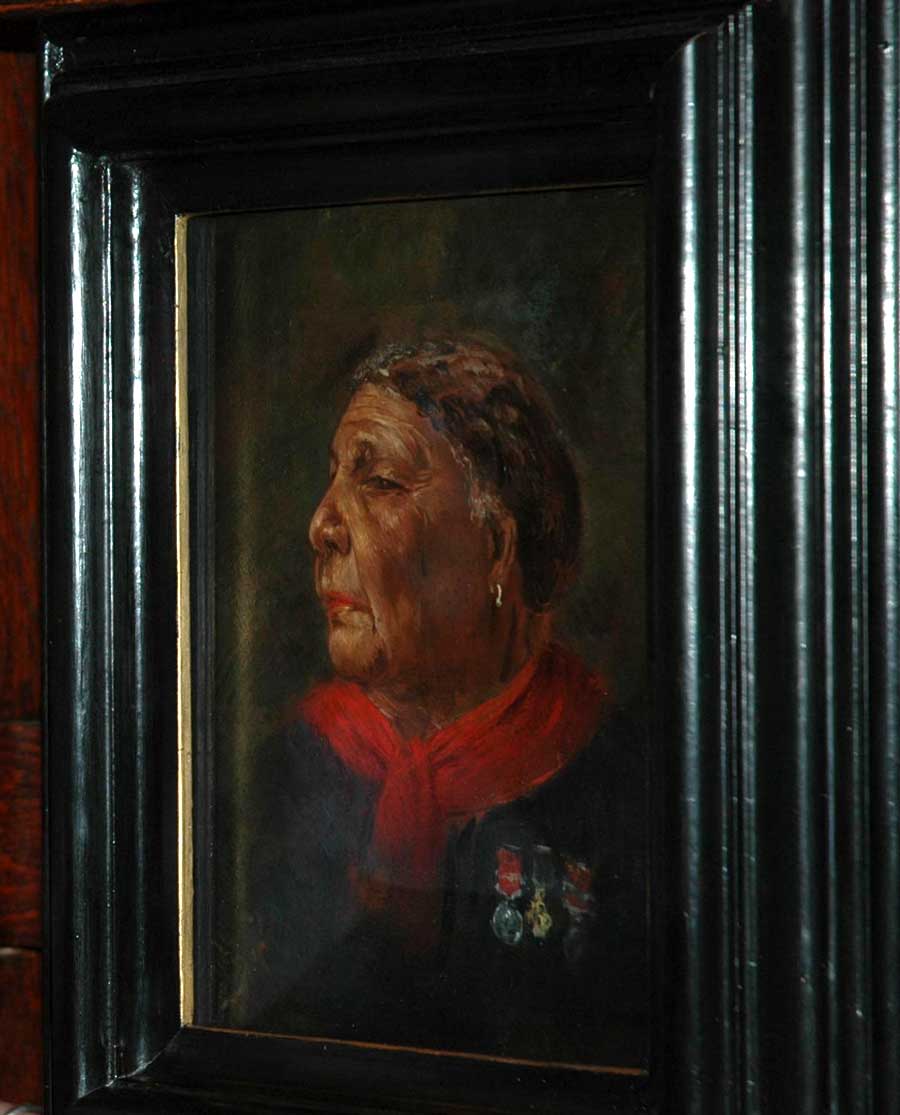The Lost Portrait of Mary Seacole & its Forgotten Artist
“When I encountered her portrait for the first time I found myself looking at a woman for whom till then there had been only one photographic image – a small carte de visite from the late 1860s – covering the last 25 years of her life till her death in 1881. But there was no comparison between that photograph and this new iconic, authoritative portrait of Seacole at the height of her fame. And, by some miracle, it had landed in my lap.”
Mary Seacole: an Inspirational Figure
It is every historian and biographer’s enduring fantasy – particularly if there is a paucity of primary source material on their subject – to discover something new: a cache of letters, an unpublished work, or perhaps even better still, a portrait which, till then, no one had known existed.
I counted myself extremely lucky to be one of those who have experienced that magical, serendipitous moment the day that I held in my hands a lost image of the Jamaican nurse and doctress, Mary Seacole, a heroine of the Crimean War for her services to the sick and wounded, who has, in the last 30 years since her rediscovery, become an inspirational figure to many.
When I encountered her portrait for the first time I found myself looking at a woman for whom till then there had been only one photographic image – a small carte de visite from the late 1860s – covering the last 25 years of her life till her death in 1881. But there was no comparison between that photograph and this new iconic, authoritative portrait of Seacole at the height of her fame. And, by some miracle, it had landed in my lap.
I had first discovered Mary Seacole when writing about her in my Encyclopedia of Women Social Reformers published in 2001. Information about her then was very patchy, but I had been captivated by the wonderful idiosyncratic narrative voice of her memoir and had found her feistiness and indomitable spirit inspiring. I decided to start researching her biography even though I had no publishing deal. Soon after, I discovered that thing all biographers dread: someone else had got there first. I was disconsolate, but, compelled to continue filling in some of the many huge gaps in Mary’s life story, I carried on regardless, as and when time permitted.
I needed the help of experts, especially military specialists on the Crimean War, in order to progress my research and began corresponding with members of the Crimean War Research Society and the Orders and Medals Research Society. It was a member of the OMRS who contacted me out of the blue with the Jpeg asking me, as someone who had a specialist interest in Mary Seacole, if I could identify her as the sitter for a portrait that had recently come to light.
I’ll never forget the excitement and the sheer shock when I opened that JPeg. For there, on the computer screen, was the face of the mature, dignified Mary Seacole. With her head held high, proudly displaying the emblem of her Creole identity – a red neckerchief – and wearing a set of three miniature medals – the British Crimea; the Turkish Medjidie and the French Legion of Honour – how could it be anyone else but her?

From a ‘posh boot sale’ to the National Portrait Gallery…
It was as though the artist had never existed…
